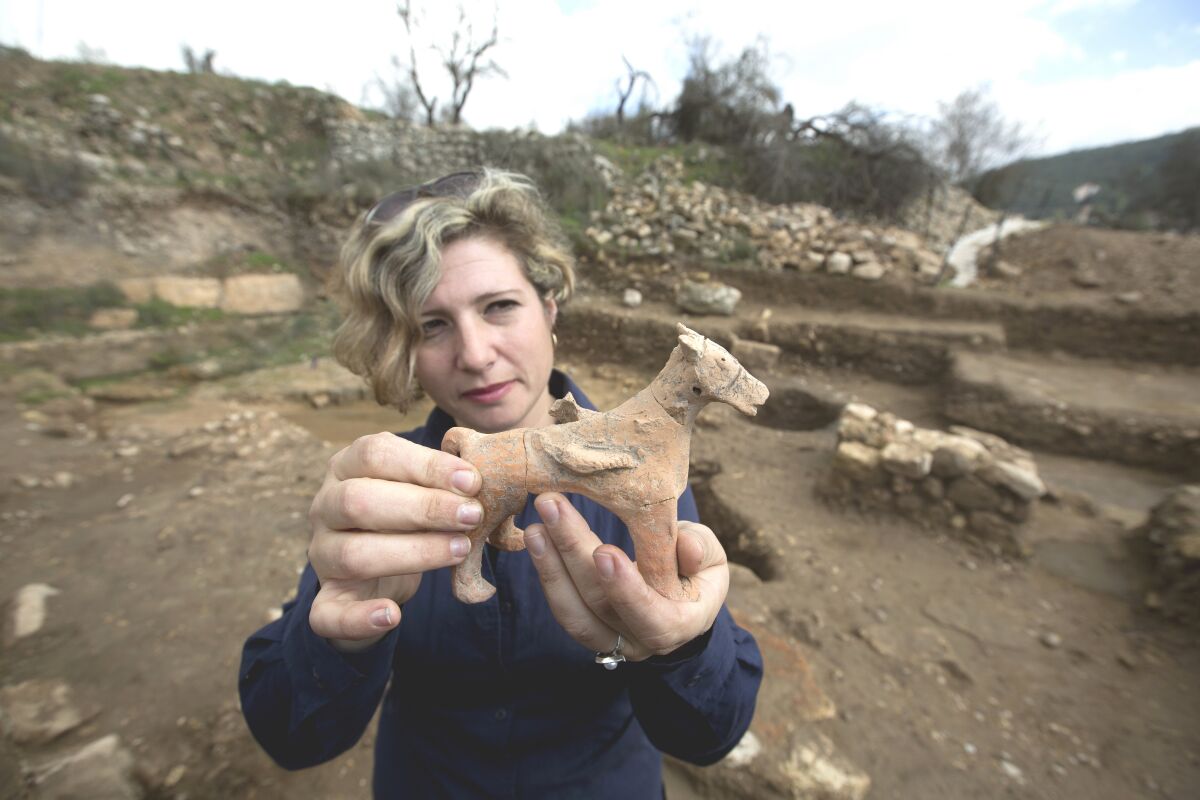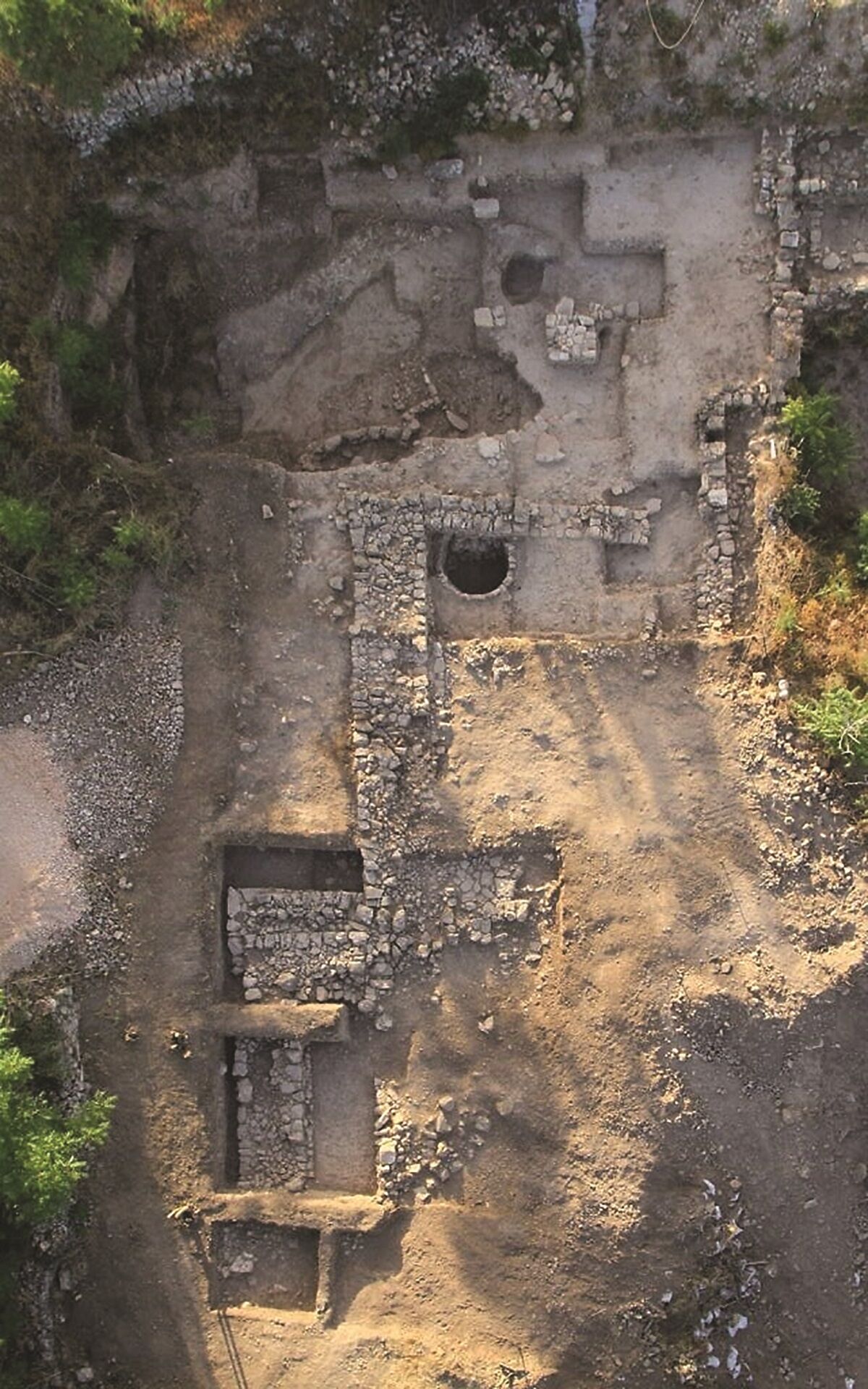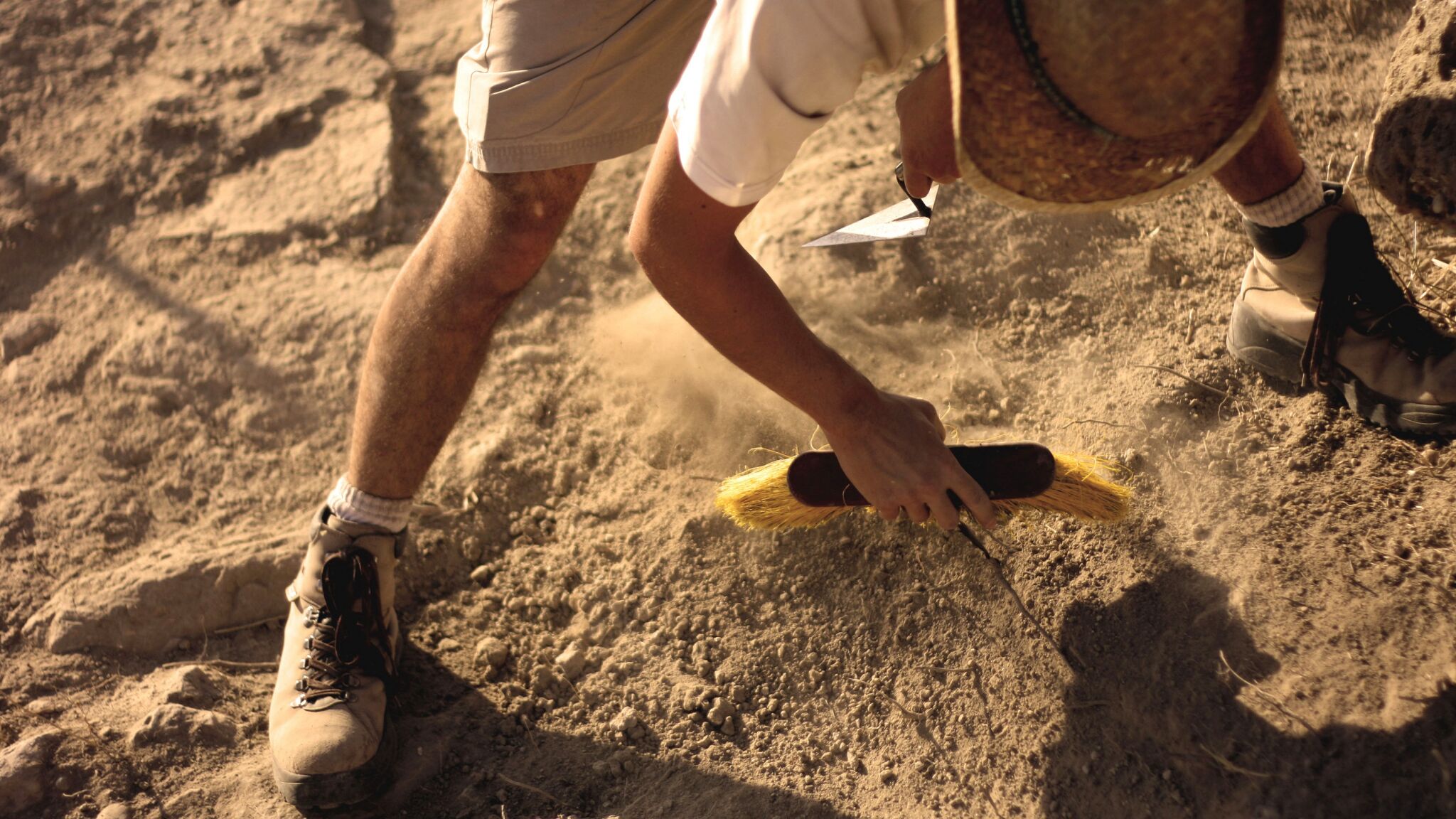When it comes to archaeology in Israel, too many archaeologists and journalists seem to have one overarching goal: disprove the Bible. Too often it seems as if the Bible is on trial, and journalists, and even some scientists, are using the archaeological evidence to prosecute it for fraud.
This is surprising, considering archaeology is supposedly a science, which means there is less room for biased interpretation. The truth is, however, archaeology is as much art as it is science. While the science of archaeology is straightforward and unbiased, the way that archaeologists interpret the coins and pottery shards, the walls and fills, is subjective. Conclusions are shaped by the beliefs and values of the archaeologist. Furthermore, the evidence and its interpretation by scientists is then interpreted and reported by journalists, who also filter it through their beliefs, values and biases.
This is why archaeologists and journalists, using exactly the same data, will sometimes draw diametrically opposite conclusions. Sadly, it is now all too common for these conclusions to reflect a strong bias against the Bible.
Bias in archaeological reporting is not new. On the one hand, if you believed everything published over the past 30 years, you would believe that Noah’s ark has been discovered (not once, but four times and in three different countries), that chariot wheels from Pharaoh’s army were seen at the bottom of the Red Sea, and that King Solomon’s navy sailed all the way to the Americas to mine precious metals. On the other hand, if you believed the biblical minimalists, you would think that King David never existed, that the united monarchy itself never existed, and that Jerusalem was an irrelevant town even 200 years after the Bible says David conquered it. All of these contradictory claims have been made by highly esteemed academics.
Those interested in the truth face an exasperating dilemma: How can we separate the true from the false? How can we know whether a discovery really proves or disproves the Bible?
To learn how to sort “fake news” from truth in the world of biblical archaeology, let’s consider the example of Tel Motza, where archaeologists have recently discovered a 3,000-year-old temple. Situated four miles northwest of ancient Jerusalem, this discovery produced a wave of media coverage, much of it negative toward the Bible.
The key article on Tel Motza was published in the January issue of Biblical Archaeology Review. Titled “Another Temple in Judah!”, the article was written by Shua Kisilevitz and Oded Lipschits, the two archaeologists responsible for excavating the site. According to the authors, the temple at Tel Motza “apparently stood, operated and welcomed worshipers through most of the Iron Age ii, from its establishment around 900 b.c.e. until its demise sometime toward the end of the Iron Age (early sixth century b.c.e.).”
The discovery of a “temple” outside of Jerusalem during this time period raises some important questions. “What is a temple doing at Tel Motza during this period, when the Bible says the only temple in Judah was in Jerusalem?” asked Kisilevitz and Lipschits. According to these archaeologists, and the many journalists who have perpetuated this claim, the fact that a temple has been discovered outside of Jerusalem undermines the biblical record, thereby calling into question the Bible. “Ancient Place of Worship Found Near Jerusalem Challenges Assumptions About First Temple,” headlined Haaretz’s article on the discovery. The Daily Mail wrote, “Iron Age Temple Discovered at Tel Motza Near Jerusalem Calls Into Question the Biblical Claim That Solomon’s Temple Was the Only Temple in the Ancient Kingdom of Judah.”
Let’s analyze this claim, and similar questions of whether the archaeological discovery matches the Bible, by following a simple procedure.
Step One: Get the Facts
The first thing to do when considering a claim such as this is to strip the argument down to the facts. Most of the time, regardless of the personal bias of the archaeologists, the raw facts of the discovery do not change and are incontrovertible. The most important facts include what was discovered, the dating of the discovery, and the location of the discovery.
Using the facts publicly available, here is what we know about the Motza temple.
First, Kisilevitz and Lipschits uncovered large grain silos built into the earth prior to the construction of a large building, of which only the northern and part of the southern walls have been discovered. Some of these silos date to the Iron iia period (10th to early ninth centuries b.c.e.), and one silo was discovered directly under the large building.

Second, east of the building entrance is a large courtyard. Inside the courtyard, the archaeologists uncovered an altar, some broken idols and other religious ritual paraphernalia. We know too that the courtyard had four phases of use, the first of which began sometime during the 10th century b.c.e. (during which there was a cultic assemblage). During the second phase, the courtyard was covered with dirt and sealed with plaster. While the courtyard continued to be used throughout Iron Age ii, the cultic items were not found attached to the second, third or fourth phases of use. Archaeologists are still unsure what happened to end the fourth phase of its use. These are the established facts, as presented by the archaeologists themselves.
In summary, Tel Motza exhibits a cultic religious space that was used from the 10th century to around the sixth century b.c.e.
With the basic facts established, it is time for the next step.
Step Two: Consult the Biblical Text
This is where mistakes are easily made, and where bias tends to creep in. When considering what the Bible says, it is extremely important to put aside preconceived notions of what you think the text says about the subject and read what the Bible actually says.
With Tel Motza, the authors tell us that the Bible claims there was only one religious temple in Judah, and that it was at Jerusalem. “What is a temple doing at Tel Motza during this period,” they ask, “when the Bible says the only temple in Judah was in Jerusalem?!” Is this correct? Kisilevitz and Lipschits did not cite any scriptures to support this conclusion.
It is true that the biblical record reveals there was one true temple, and that this temple was in Jerusalem. However, the Bible plainly records that many kings of Judah constructed shrines and places of cultic religious worship outside of Jerusalem. In fact, there are numerous examples of false religious sites being built all across Judah.
Take King Solomon, who was responsible for building the first temple. The Bible says that Solomon also built a place to sacrifice to false gods on the Mount of Olives: “Then did Solomon build a high place for Chemosh the detestation of Moab, in the mount that is before Jerusalem, and for Molech the detestation of the children of Ammon” (1 Kings 11:7). 2 Kings 23:13-14 record that this specific location was not destroyed until the time of King Josiah, 300 years later.
The English phrase “high place” comes from the Hebrew bamah (plural bamot). Though the word is associated with hills, there are also instances in the Bible where these religious shrines were located in valleys or inside cities (1 Kings 13:32; 2 Kings 17:29; 23:5; Jeremiah 7:31). Additionally, bamot often had buildings associated with them (1 Kings 12:31; 2 Kings 17:29; 23:19). Perhaps the Motza “temple” was one of these “houses of the high places” (2 Kings 17:32).
King Solomon’s son Rehoboam also worshiped foreign gods and built places of cultic worship outside Jerusalem: “And Judah did that which was evil in the sight of the Lord …. For they also built them high places, and pillars, and Asherim, on every high hill, and under every leafy tree” (1 Kings 14:22-23). Have Kisilevitz and Lipschits uncovered a false temple constructed by King Rehoboam? To this day, there are still plenty of leafy trees in the Motza area.

The Bible says that King Asa, during the beginning of the ninth century b.c.e., removed idols and attempted to purge Judah of sin. But Asa didn’t destroy the places of false worship. “And Asa did that which was right in the eyes of the Lord, as did David his father. And he put away the sodomites out of the land, and removed all the idols that his fathers had made. … But the high places were not taken away;” (1 Kings 15:11-12, 14).
The Bible also specifies that Asa’s son Jehoshaphat restricted idolatry as well, but that he too allowed the people to worship and sacrifice outside of Jerusalem. “And he walked in all the way of Asa his father … howbeit the high places were not taken away; the people still sacrificed and offered in the high places” (1 Kings 22:43-44). The Bible records that kings Jehoram, Uzziah and Jehoash, among others, also allowed these pagan places of religious worship to continue.
The truth is, all of Judah’s kings apart from King Hezekiah and King Josiah allowed cultic sites to exist throughout Judah. Kings Joash and Ahaz actually closed down the temple in Jerusalem and built their own places of worship across Judah (2 Chronicles 24:18; 28:24-25). Some of these kings, including Asa and Amaziah, destroyed the idols but did not break down the buildings attached to their worship. King Hezekiah destroyed places of cultic worship, but these were promptly rebuilt after his death by his son Manasseh (2 Chronicles 31:1; 33:3). It wasn’t until the arrival of King Josiah in the seventh century b.c.e. that cultic sites in Judah were finally destroyed.
When you carefully consider the biblical record, you find that it actually chronicles the opposite of what Kisilevitz and Lipschits concluded. While there was only one true temple in Judah during the Iron Age ii period, places of false religious worship were common across the kingdom!
Step Three: Compare Facts With the Bible
In their Biblical Archaeology Review article, Kisilevitz and Lipschits claim that their discoveries at Tel Motza have “fundamentally changed the way we understand the religious practice of the Judahites.” They mean to suggest that the facts cast doubt on the biblical record. But their “understanding” was based on a misreading of the Bible.
Truth is, their discovery of a place of religious worship at Tel Motza confirms the biblical record! It appears they have exposed an assembly that matches a biblical bamot, including an attached building. The discovery of a building accompanying a sacrificial altar is rare, but other examples do exist. For example, a similar discovery was found in Arad.
At Motza, archaeologists might have actually found proof of a biblical event. Notice this paragraph of the report: “In all, we noted four phases from the Iron Age ii in the temple courtyard, the first of which is the best preserved and comprised the cultic assemblage, offering table, pit and altar. These were eventually covered with fills and sealed under a plaster floor, marking the second floor of the temple courtyard.”
Here, Kisilevitz and Lipschits recognize that the evidence of cultic function existed only in the earliest phase of use of the building in the late 10th century b.c.e. According to the archaeological record, it appears that sometime in the early ninth century the idols were thrown onto the ground, buried in the dirt, and then plastered beneath a new floor.
Is this event consistent with King Asa’s dramatic destruction of idols in the ninth century b.c.e.? “And Asa did that which was right in the eyes of the Lord, as did David his father. And he put away the sodomites out of the land, and removed all the idols that his fathers had made. … But the high places were not taken away; nevertheless the heart of Asa was whole with the Lord all his days” (1 Kings 15:11-12, 14).
When the biblical record is considered alongside the evidence, we can surmise that the second floor of Tel Motza might have been built for the purpose of ending cultic use of the site during the time of King Asa. The courtyard and building remained, but it was no longer used for religious purposes.
To their credit, Kisilevitz and Lipschits recognized this possibility. But it was quickly dismissed and replaced by their own hypothesis: “This deposition [of the plastered floor over the cultic system] does not signify a break in religious traditions but rather a religious ritual during which cultic paraphernalia were decommissioned to make room for new items.” It’s an interesting thought, but where is the evidence?
Consider too: There is no evidence to contradict the biblical interpretation that this did “signify a break in religious tradition.” Why do the authors reject this explanation? Was it because it matched too closely with the Bible’s description of King Asa’s reforms?
I have not excavated Tel Motza and have not examined the wealth of material uncovered at the site. It is impossible for me to state with certainty that Tel Motza is a site of King Asa’s work. However, the archaeological evidence uncovered by Kisilevitz and Lipschits suggests that this is a distinct possibility. Yet instead of following the evidence and seriously considering the possibility that the biblical record is accurate, these archaeologists use the evidence to suggest the Bible is wrong. Why?
Every archaeologist is free to posit his own theory about what he or she discovers. Indeed, this is the nature of archaeology. Stones without stories are of little value to humanity. Forming an educated guess as to the history of a site or artifact is the responsibility of every archaeologist. And those closest to the raw data often have the best opportunity to devise the most plausible theory.
But with that firsthand knowledge also comes responsibility. To handle the knowledge honorably. To consider all the facts. To tell the entire story.
Every archaeologist and historian often unwittingly incorporates his own bias into his interpretation of history. In the past, too many in their quest to prove the Bible true have claimed biblical significance in their discoveries when there was none. Today, however, the pendulum has swung in the opposite direction.
This is the nature of archaeology in Israel today, and even within the pages of the once-great Biblical Archaeology Review. It is an objective fact that archaeologists and reporters are making biased claims against the biblical text. And you as the reader should be aware of it.
In the case of the Motza temple, have the excavators made a discovery that ‘fundamentally changed the way we understand the religious practices of Judahites”? Maybe it has for them, but not for those who read the Bible.
It is a sad fact that there is a lot of “fake news” in the world of biblical archaeology. When reading about a new archaeological discovery, we cannot casually accept the media’s interpretation, especially if it discredits the Bible. Don’t take for granted that the experts are always right. Always check the actual facts, and consider them objectively alongside a thorough reading of the biblical text. When we take this approach, we will often be surprised to learn that many of the discoveries that supposedly “disprove the Bible” actually do the opposite.

